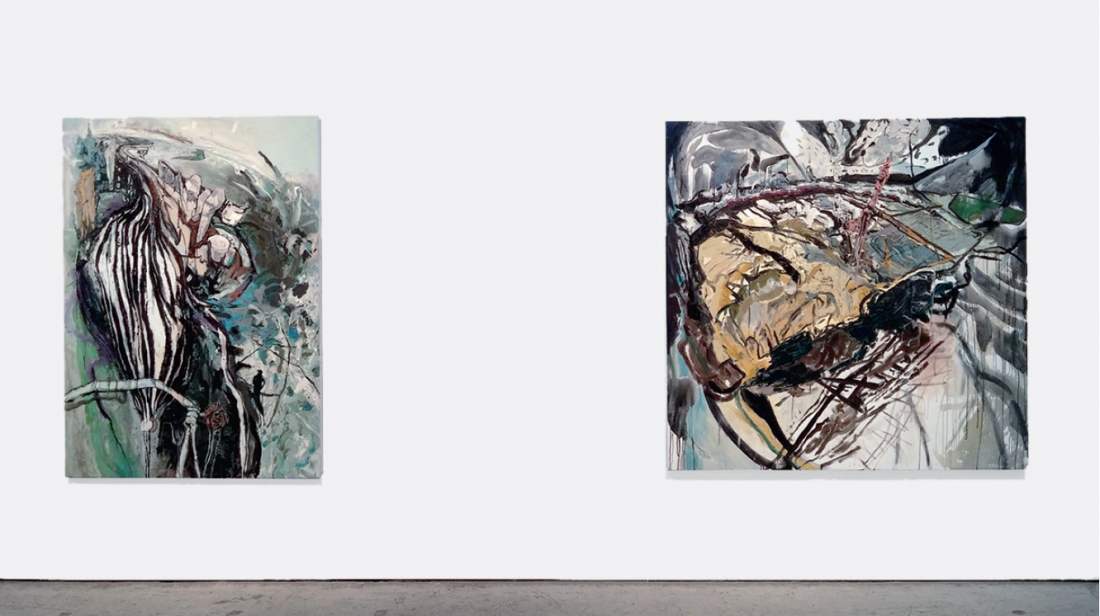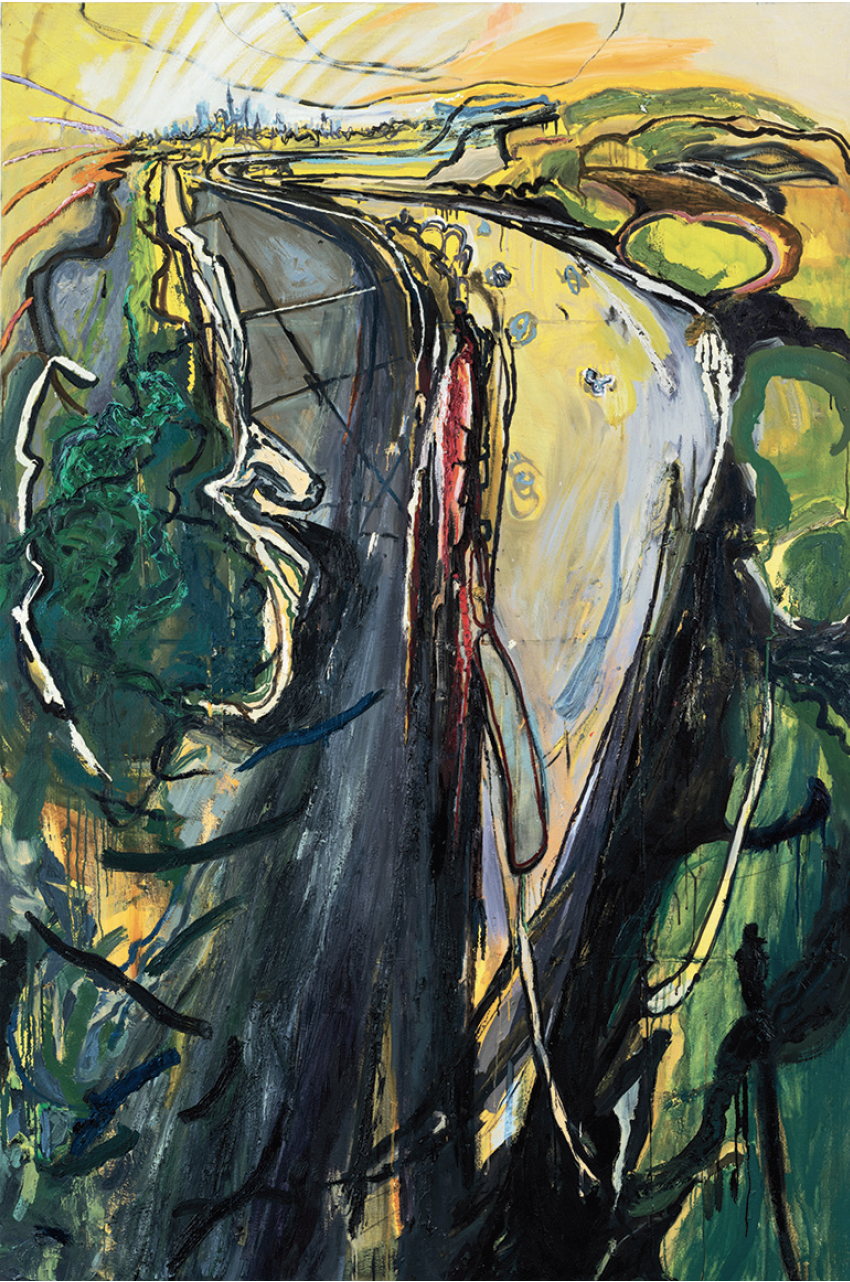Susanna Heller
Visiting the big city has a high-pitched intensity. The moment the skyline appears on the horizon, viewed from the window of an aeroplane or Greyhound bus, its tiny irregular buildings growing more distinct by the minute—a sense of electric possibility is triggered in me—anything could happen there. Susanna Heller’s paintings of New York City and Toronto bring up the same feeling. In her exhibition at Olga Korper Gallery, the skylines of both cities emerge out of a mass of painterly abstraction, and it takes a moment to realize what you are looking at.
The excitement and packed movement of the city appear in these paintings as explosive, chaotic outbursts above and below the minimal, toothy lines that trace the skyline. Sometimes there are clouds and water, but often these large expanses read merely as excuses for ecstatic abstraction that don’t correspond to reality. There are jagged black shapes, thick smears of red and yellow, glistening marks and dry paint chips, grey city tones, little pieces of black tape, thin washes of blue and purple and globs of white like confectioner’s icing. Moments of exposed raw canvas are juxtaposed with globs an inch thick that make you want to stick your finger in to check for wet paint. These paintings are about the city, but first they are about the thickness of paint and the ability of the human hand to move it; a story of how paint becomes something other than itself in imitation, only to lapse again into its pure, greasy, colourful self.

Susanna Heller, “Susanna Heller,” 2014, installation view, Olga Korper Gallery, Toronto. Photographs courtesy Olga Korper Gallery.
This exhibition brings together Heller’s Canadian upbringing and New York City, her birthplace, and the city to which she returned in 1978 after her studies. Raised in Montreal and educated at NSCAD in Halifax, Heller’s numerous homes have long been her muses and the dominant subject of her expressionist paintings. In the ’80s, it was Halifax; its train tracks and loading docks, bridges and fish houses, red maples and countless rocks. It was New York City in the early ’90s, with the subway, bridges into Manhattan, the Citizen’s Bank building on Canal and Bowery, a ride on Coney Island.
In this show, we see Toronto from all the best vantage points. In Oh Mies!, 2014, as though flying though the air, we look down at the Mies van der Rohe buildings as they thrust upwards like caricatures of themselves, fresh with oily black paint and full of movement. In Deep Ravine, 2014, we look down at the Don Valley Parkway, its lush cradle rendered in greens and yellows, with the tiny skyline nudged to the top left corner of the canvas. In all her paintings, Heller tries to include multiple vantage points in a single composition, so that the surface of the city often seems to be curving outwards, bellying from the flat canvas into the world.
Heller’s fascination with the city brings to mind Leon Kossoff, whose insistent urban motifs—the railway, public spaces, and landmark architecture—are culled from his native London and painted in heavy, muddy impasto. Both painters obsessively draw in the field of action, bringing hundreds of rough, expressive drawings back to the studio in an attempt to capture the movement, energy and rhythms of daily life.

Susanna Heller, Deep Ravine, 2014, oil on canvas, 71 x 51 inches.
The constant, painful reconstruction of post-war London was a major theme for Kossoff in the 1950s. At different stages, Heller has also turned her attention to devastating urban changes. In 2003, a series of charcoal drawings and paintings documenting the ruins of 9/11 were exhibited at OKG, and recently Heller’s exhibition titled “Phantom Pain” featured cityscapes of New York City alongside depictions of her husband Bill who continued to suffer pain in his leg long after it was tragically amputated in 2010. With Heller, as with Kossoff, the fervor of the city is also the fervor of human life: layered, mixed, scraped off, smeared and redrawn onto dense, tangled canvasses. The paint and its varied qualities come to represent the inherent possibilities of the city and the body—the exuberance of what’s there, and the agony of what’s missing.
In Sebald’s poignant novel, Austerlitz, the city is embodied in the murky suppressed memories that train stations and hotel lobbies can stir in the sad, complicated hearts of people. Baudelaire, stumbling upon an urban swan, finds it restlessly bathing in the dust, asking for rain. The swan’s lake is forever gone, absorbed into changing Paris. It’s like going back to the spot where your house, studio or business once stood only to find there a parking lot, high-rise or store. It seems we inhabit cities with more than just our bodies; we invest, rejoice, despair and grieve in them, and Heller’s explosive paintings, with their wild, expressionistic expanses, act rapturously in this drama. ❚
Susanna Heller was exhibited at Olga Korper Gallery, Toronto, from April 5 to April 26, 2014.
Anna Kovler is an artist and writer living in Toronto.

